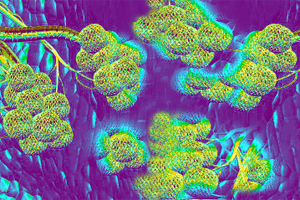It is an involuntary, automatic process that we are unaware of, and yet, it is fundamental for life. It has a mechanical process that is carried out one stage after another, and they are all performed thanks to the muscular movement of the diaphragm and the intercostal muscles.
The first stage of respiration is inhalation. A portion of air is captured through the nose and then it heads on towards the lungs.
In order to make space for the incoming air, we increase the volume of our thorax, holding the position for a few seconds. The next step is exhalation, which is characterized by a drop in thoracic capacity as the lungs expel the air from the inside of our body towards the outside.
The path of air
When we breathe in, the air enters through the nose, where it is immediately warmed-up, moistened and cleaned. Then, it moves on towards the pharynx, and next, the tonsils, which act as a filter, destroying pathogen organisms. The journey of air continues through the larynx and then the trachea, which splits into two bronchi that are connected to the lungs. The bronchi ramify and end up becoming pulmonary alveoli.
The function of the lungs
Once oxygen has been inhaled and reaches the lungs, the gas exchange with blood is performed. Pulmonary alveoli, which are small, air-filled pouches and the terminals of the respiratory pathways, are in contact with the capillaries.
The transference of oxygen from air to the blood takes place in the alveoli. The transference of carbon dioxide (a waste gas) from the blood to the air is also performed here. This process happens during every inhalation and exhalation.
The objective of respiration is to oxygenize the tissues of the body and preserve life.
In order for this to happen, the gas exchange is necessary, which is performed by the blood and circulation.








 Muere Evita
Muere Evita